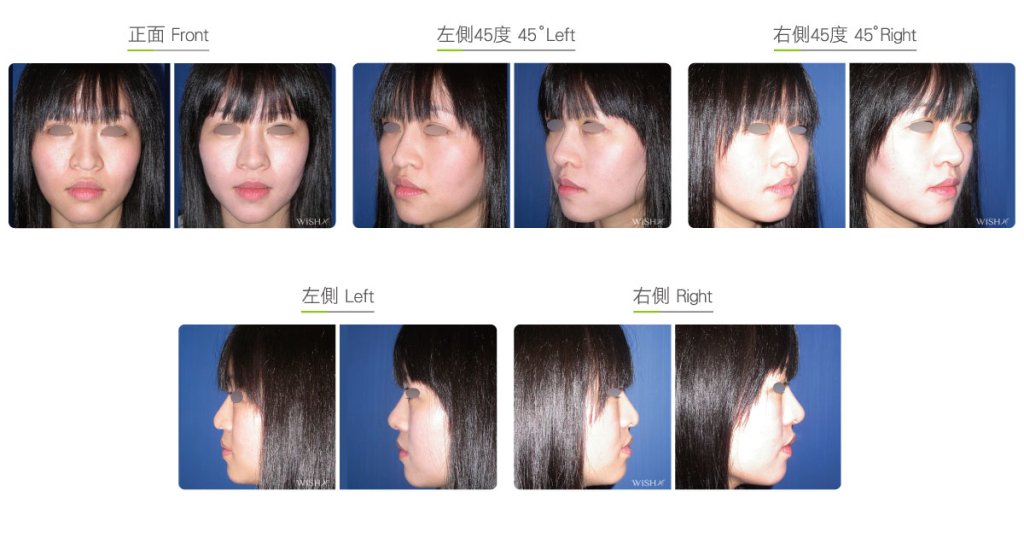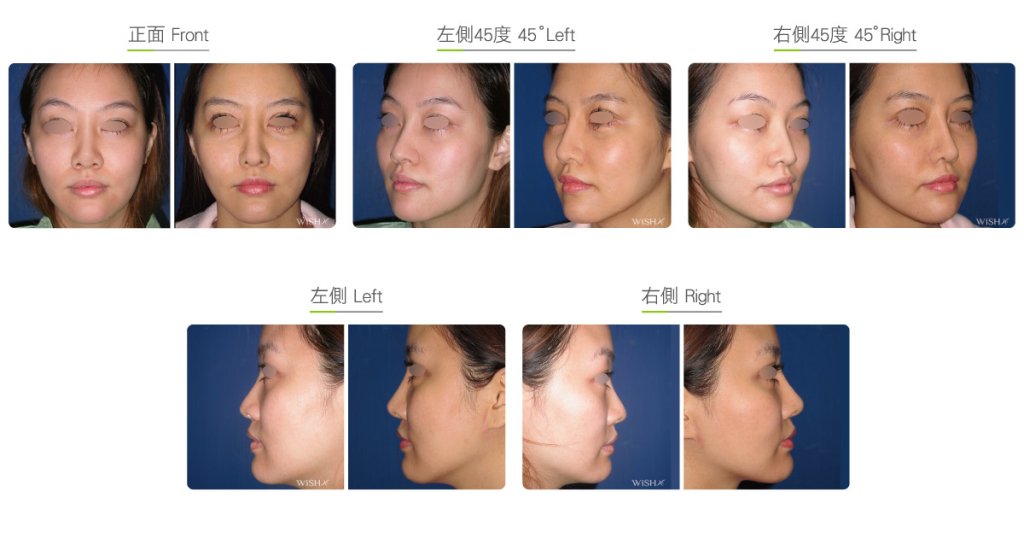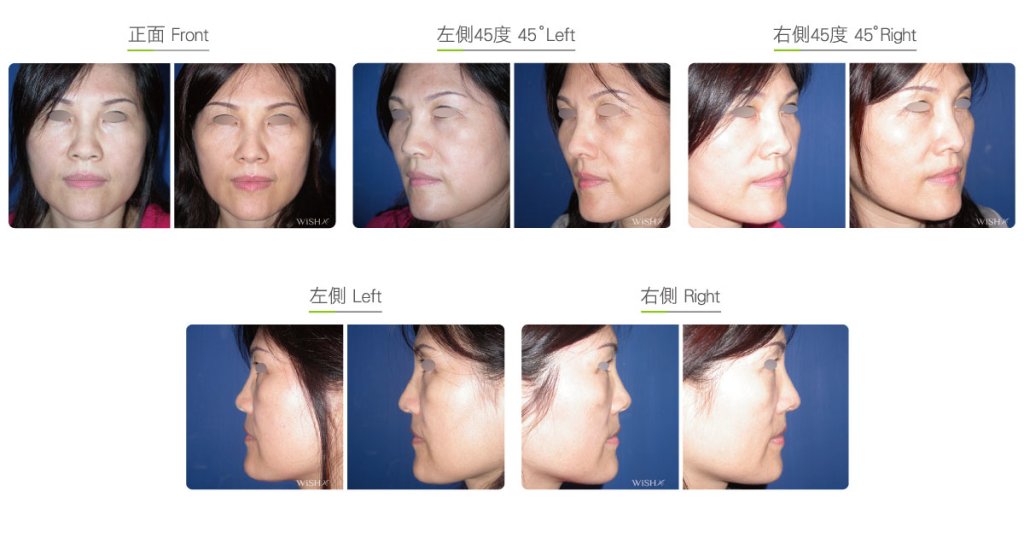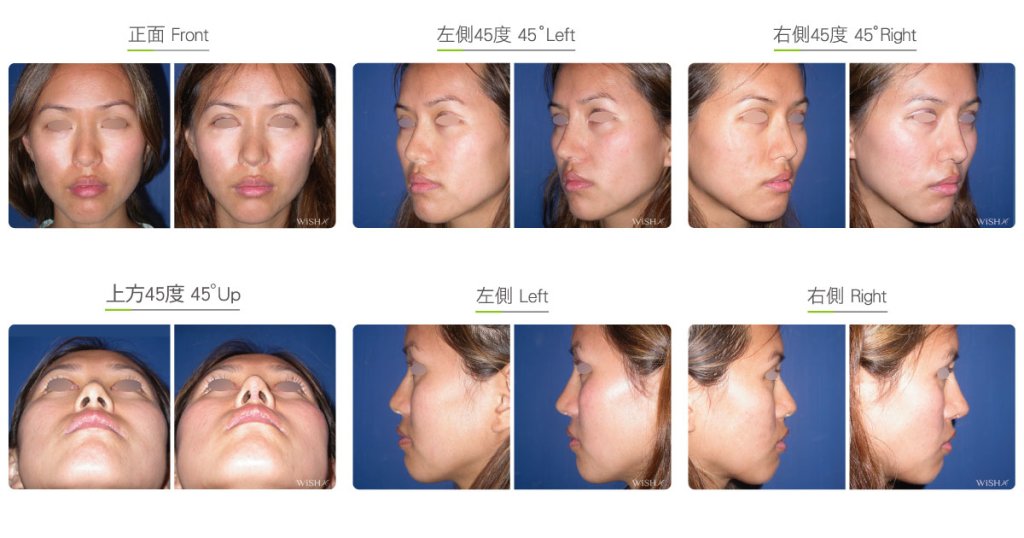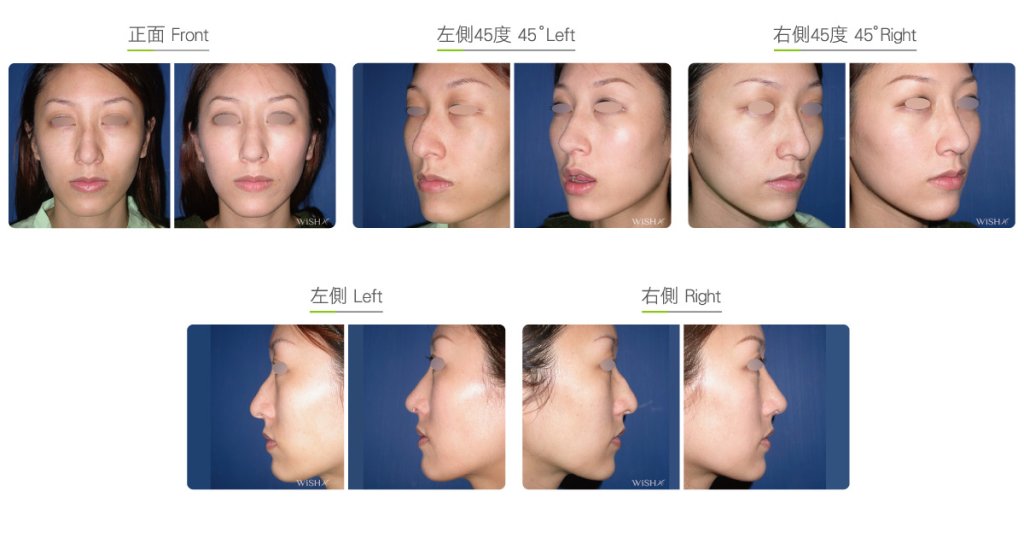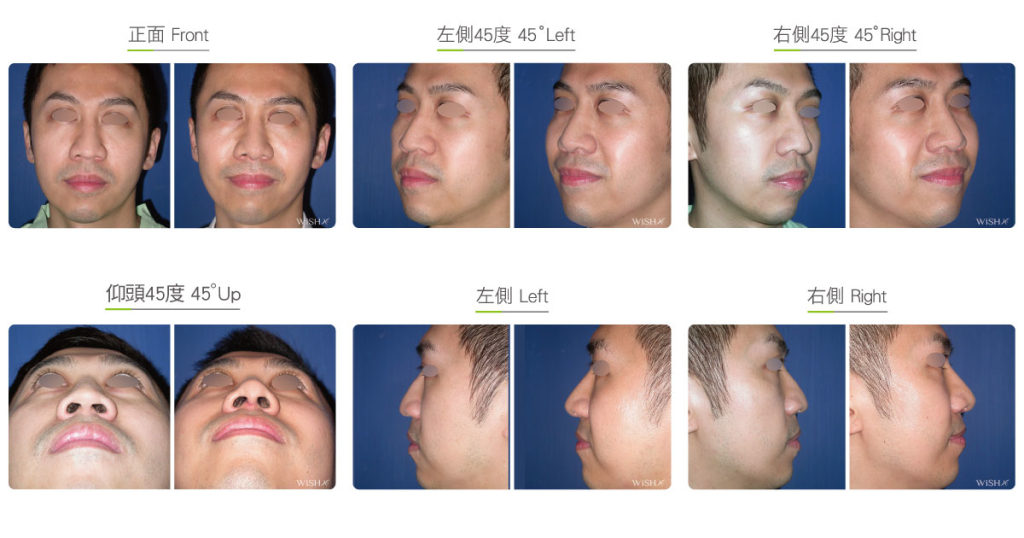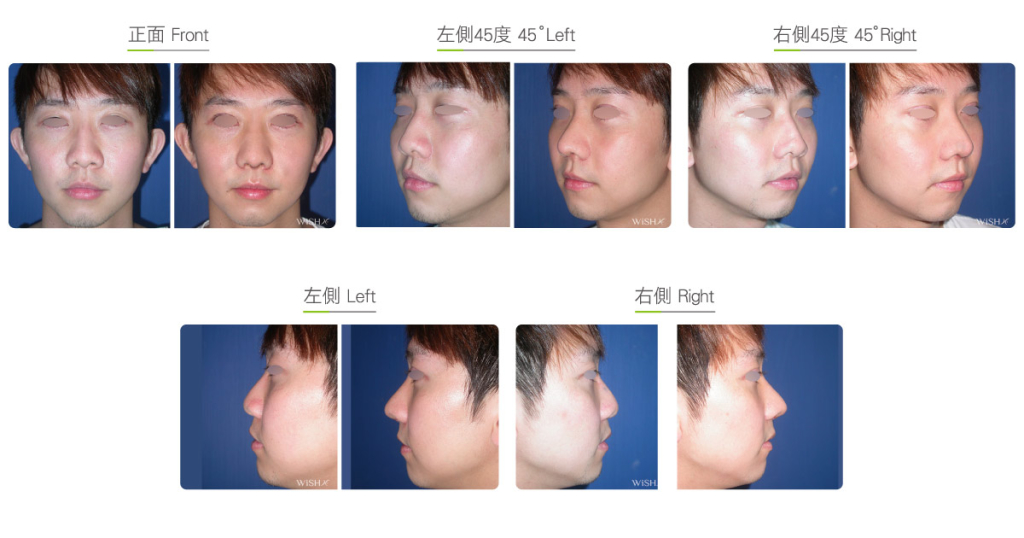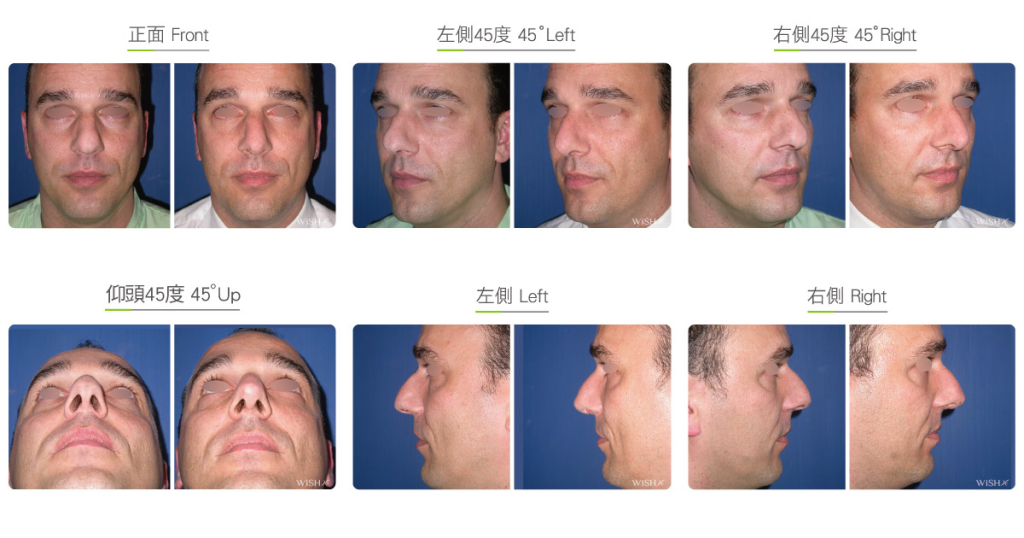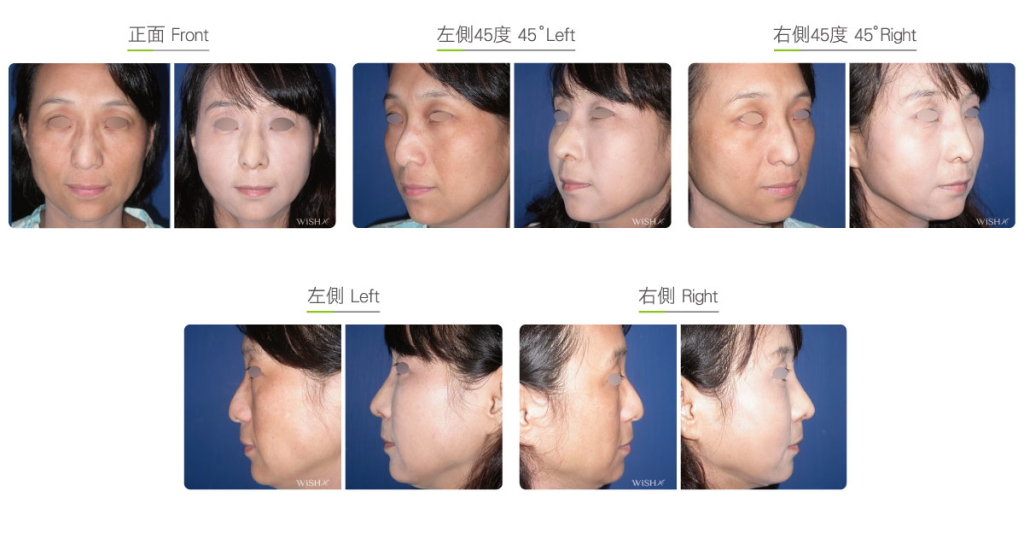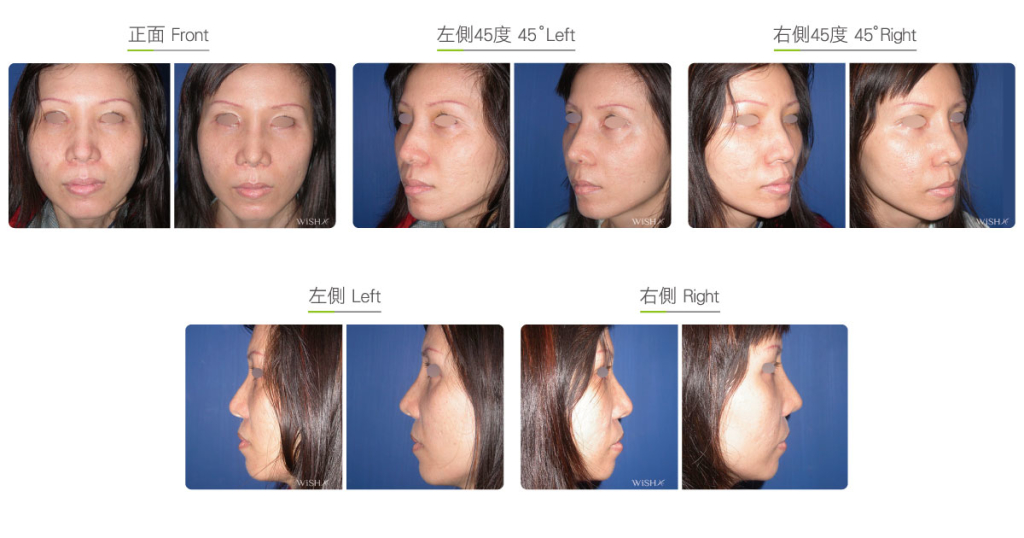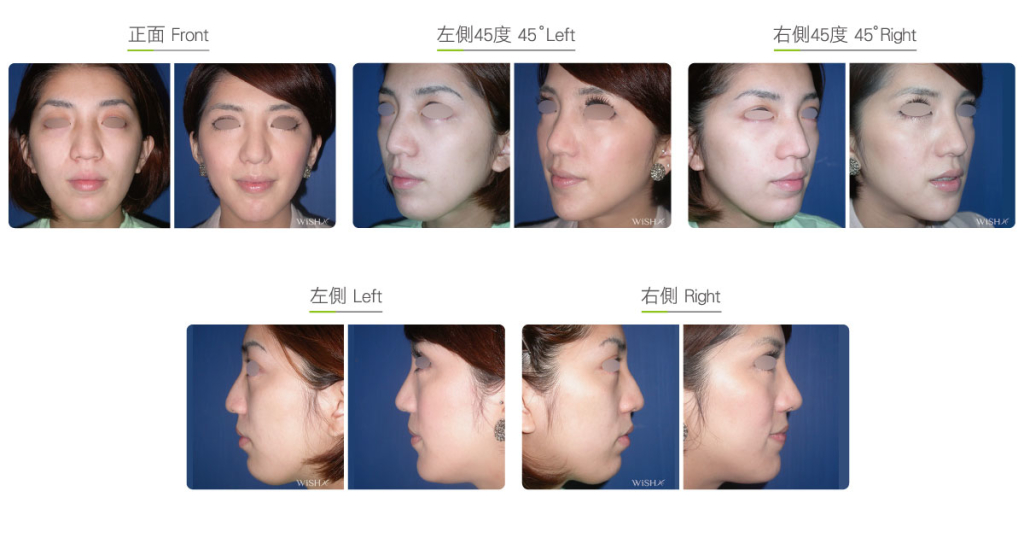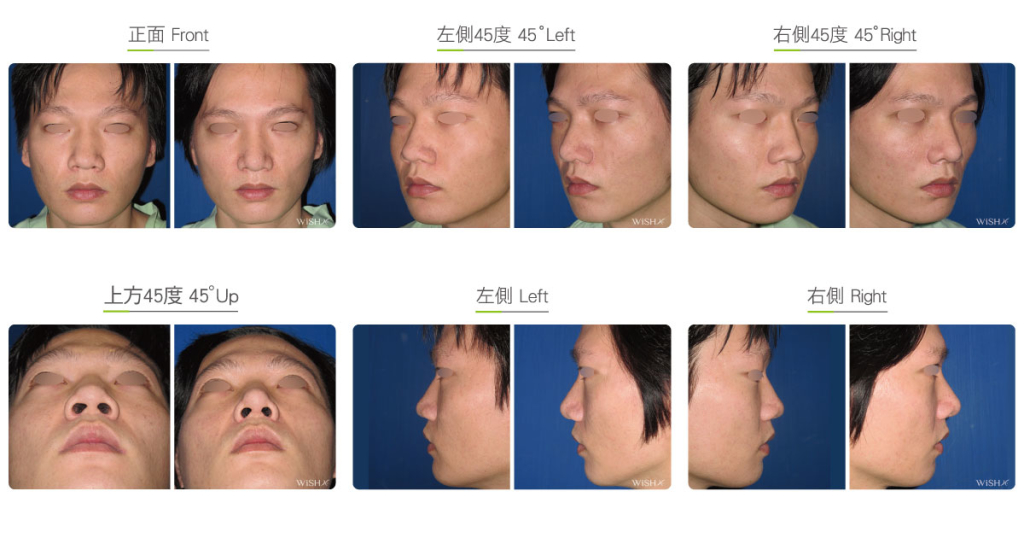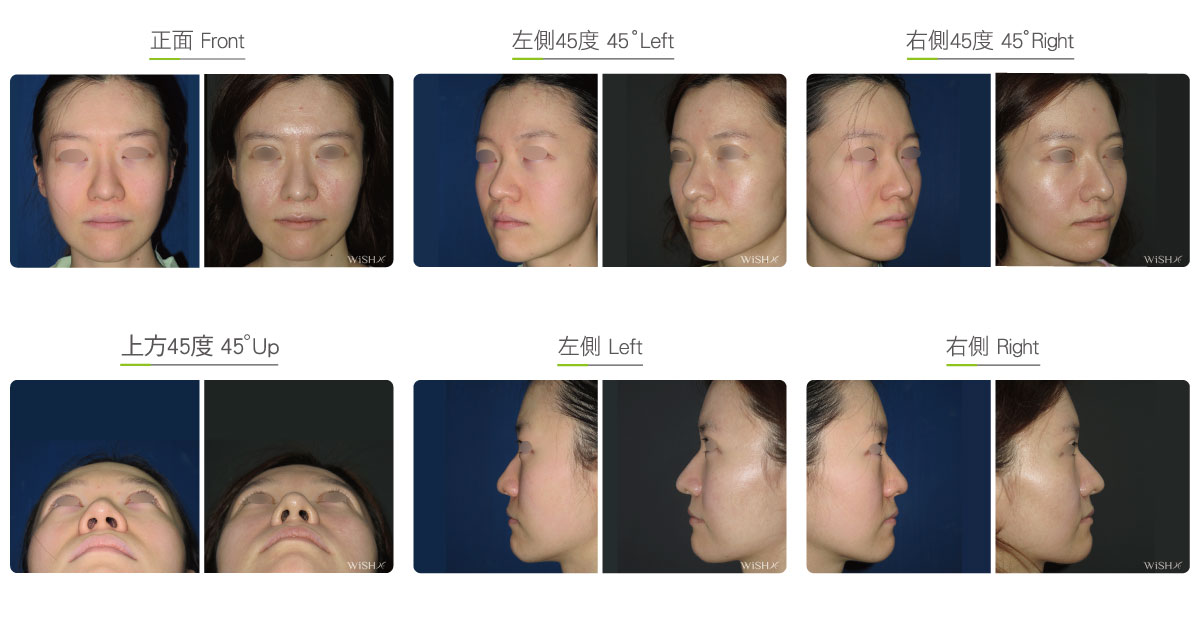Open Tiplasty
Nasal tip sculpting is conducted as a part of open (Korean-style) rhinoplasty; it is also separately performed, which is called open tiplasty. It is indicated for patients with an originally sufficiently high nasal bridge but who are unsatisfied with the nasal tip angle, length, or shape, and it improves the appearance or size of the nasal tip to obtain a better stereoscopic impression without emplacing any prosthesis to change the nasal bridge. Its procedures are similar to open rhinoplasty and should be performed via a columellar incision (open tip sculpting) and generally need to harvest the nasal septal or auricular cartilage for the tip grafts. Regularly the surgical conditions can be classified into the following:
- Tip reduction : Concentrating and reducing the bilateral alar cartilage
This is a very important part of the surgery to improve the size or pointedness of the nasal tip. For some patients with a bulbous nose or nasal tip hypertrophy, it also remove the partial alar cartilage and nasal fat to make the nasal tip appear smaller. - Tip definition: Sculpting the triangular nasal tip
This aims to create a small and round apex of the nasal tip like a pyramid, so the overall nasal tip will appear more angular and rejuvenated and will also conjoint with the nostril and nasal columella to present a V or sea gull wing shape in frontal view. Such procedures entail stacking the auricular cartilage on the nasal columella supported by the nasal septal cartilage to sculpt the nasal tip into a triangular shape. - Columella elongation: Augmenting the nasal columella
Retraction or excess shortness of the nasal columella is prone to cause nostril exposure or a snub nose, so the elongation of the nasal columella is critical to the overall length and ratio of the nose. This surgery needs to support the bilateral lower lateral (alar) cartilage and on-lay auricular cartilage graft at the nasal tip from the bottom-up with the nasal septal cartilage of higher mass and strength and extend the nasal tip downward to make the nasal tip apex and bilateral nostril margins appear like sea gull wings, also creating an appropriate length of the nasal tip. - Alar reduction: Correcting nostril exposure
The width of the ala nasi affects the frontal visual parts of nostrils, so alar and nostril reduction (mainly external reduction) should be performed for patients with congenitally big nostrils or wide ala nasi to effectively change the axis of bilateral ala nasi from a toe-out angle to a toe-in angle, thus making the nasal tip more exquisite and the nostril less exposed.
Moreover, if necessary, open tiplasty will be conducted along with other surgeries such as nasal fat shaving or septal deviation correction to render more comprehensive results from ordinary rhinoplasty.

Surgical conditions
Duration
- Type of anesthesia: IV sedation + local anesthesia
- Surgical incision: Inferior margin of the nasal columella and inside the bilateral nostrils as well as the posterior ear (harvest of auricular cartilage)
- Recovery: 5–7 days
- Removal of stitches: 7 days
General instructions
Fast from food and water on the day of operation
- Avoid exposure of the nostrils to dirty water, swimming pool water, sea water, and sauna water for 1 month postoperatively.
- Avoid smoking and alcohol and impacts to the nasal tip for 3 months postoperatively, and clean the intranasal wound in the morning and evening every day.
- Avoid squeezing the nose for 6 months postoperatively.
Ideal candidates
- Patients who have poor conditions at the nasal tip such as a bulbous nose, a short nose, or an upturned nose.
- Those who only want to undergo nasal tip correction but not change the nasal bridge.
- Those who have already received nasal bridge augmentation with a prosthesis but want to reconstruct the nasal tip.
- Those undergoing rhinoplasty who are worried about the complications of the prosthesis or unwilling to accept nasal implant emplacement.
Potential complications
- Poor wound healing
- Columella scar
- Nasal cartilage shift
- Results short of expectation
Surgical advantages
-
No prosthesis is emplaced, so there is no risk of foreign body reaction, infection, or protrusion.
-
This surgery only utilizes autologous septal and auricular cartilages, so patients can still lift the nasal tip or squeeze the nose comfortably after surgery.
-
The surgical results are almost natural and are difficult to be perceived.
-
The nose has certain resistance to impacts.
Surgical drawbacks
-
It cannot ameliorate the nasal bridge and is not indicated for patients who want to undergo rhinoplasty due to a low and flat nasal bridge.
-
Nasal tip surgery may be confined by the original conditions of the nasal bridge, which in turn constrains the surgical results.
-
It is inferior to open rhinoplasty in the degree and harmony of overall changes.
-
The results are usually inferior to those of open rhinoplasty with nasal implant emplacement.

